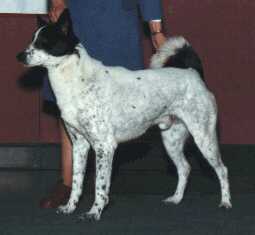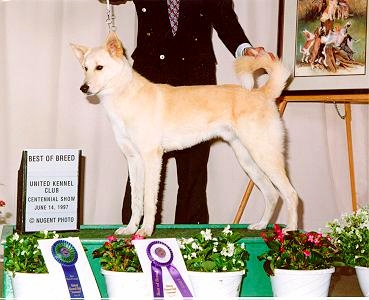
| In 1934, Dr. Rudolphina Menzel, a noted authority on dogs, immigrated to Palestine (the future state of Israel). She was asked by the Haganah, Israel's first defense force, to develop a service dog organization for guarding the isolated Hebrew settlements and fighting the War of Independence. Finding that the breeds traditionally used for war tasks suffered impaired efficiency from the adverse climatic conditions, Dr. Menzel turned her attention to the pariah dogs (semi-wild or feral dogs) she found living in the area. She concluded that this was a true native breed of dog ideally adapted to the conditions of this difficult land. She named the breed the "Canaan Dog", after the Land of Canaan. | |
| Dr. Menzel began working first with wild and semi-wild adult dogs near her home by luring them with food. She also captured litters of puppies, which she raised and found extraordinarily adaptable to domestication. She then began her own breeding program and introduced the Canaan as a working dog. The Canaan Dog was used extensively during and after World War II for patrol, tracking and guard work. One of the first dogs trained to detect mines effectively was a Canaan Dog. After the war Dr. Menzel successfully trained several Canaans as seeing-eye dogs. Today some follow that tradition by serving as therapy dogs. |  |

The Canaan Dog breed has been recognized by the Federation Cynologique
since 1966 and placed in the Spitz & Primitive Breeds Group. The
United Kennel Club recognized the breed in 1992 and in 1998 moved it
from the Herding Group to the newly created Sighthound & Pariah Dog
Group. The Canadian Kennel Club took
the Canaan Dog into its Working Group in 1993. In August 1997 the
American Kennel Club took Canaan Dogs into their registry as part of
the Herding Group.